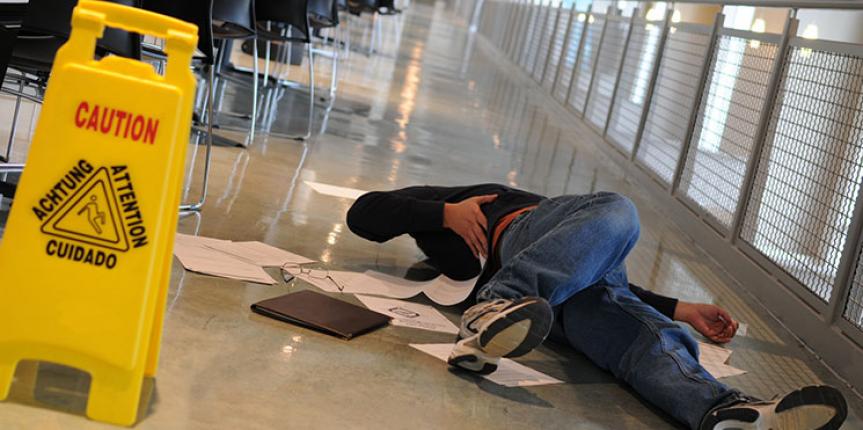How to Win A Slip and Fall Accident Lawsuit
The average slip and fall costs $30,000, so it is important that you fight for the medical, loss of wages and pain and suffering damages that you deserve.
Over one million people suffer significant injuries from slip and fall accidents in the United States annually. Approximately 17,000 individuals die each year because of these accidents. Only car accidents rank above slip and falls as the causes of accidental deaths in the U.S. Twenty-five percent of serious injuries sustained in the workplace are a result of slip and fall.
Anything from water accumulation to uneven flooring to icy conditions to poor lighting to slippery surfaces can contribute to slip and falls. The most serious slip and fall injuries involve the back or spine and head injuries. At other times individuals sustain less severe injuries such as broken bones, muscle strains and sprains.
An important key to winning a slip & fall lawsuit is understanding the laws
A state appeals court dismissed a lawsuit by a man who claims he slipped and fell on a Bridgewater property. The man alleged he was injured in 2009 when he was walking on a wet carpet on a footbridge at the golf course. A state law known as "the Landowner's Liability Act" grants immunity for lands used for sport and recreational activities and so the case was dismissed.
An Arizona woman received $1.5 million after she slipped on water that was leaking out of a Coca-Cola machine. The woman had to have surgery after the injury and claims she has been suffering from chronic pain ever since. Pima County Superior Court in Arizona awarded the woman $1.5 million.
What do these two stories illustrate? You need to understand Arizona's unique slip and fall laws in order to win a case. If you slip and fall on another's party the owner isn't automatically at fault. Also, premises liability claims are usually very difficult to prove.
Understanding the owner's responsibilities and your relationship to the owner
Whether you were injured in a grocery store, golf course accident, convenience store, restaurant or bar, hotel, shopping mall or on any commercial or residential premise, it is always a good idea to secure legal representation immediately. In Arizona, you have only two years to file a personal injury lawsuit, so it is important you take action quickly!
In order to win a premises liability case, you must prove the negligence of the owner. In order to do this, you must show the following:
- The owner failed to provide or maintain safe premises
- The owner created hazardous conditions on the property
- The owner failed to warn, safeguard or eliminate the hazards
Structural damages such as uneven steps, cracked sidewalks and parking lot potholes all present hazardous situations. But to prove negligence, you would have to show that the property owner knew about this hazard or should have known about it. Blatant negligence is when a property owner violates a statute, such as not installing handrails.
Another important aspect of a slip and fall case involves the relationship of the individual to the owner. If an individual is an invitee, the owner can be held liable for failure to exert reasonable care and keep the premises safe. A hotel guest would be an example of an invitee.
A licensee is someone who is allowed by the owner on to the property. An example of this would be a social guest. A property owner can be held liable for injury to a licensee, for hidden dangers and for not adequately warning his guest about dangers.
A trespasser is someone who enters a property without permission. A business is usually the least liable when a trespasser sustains injuries.






